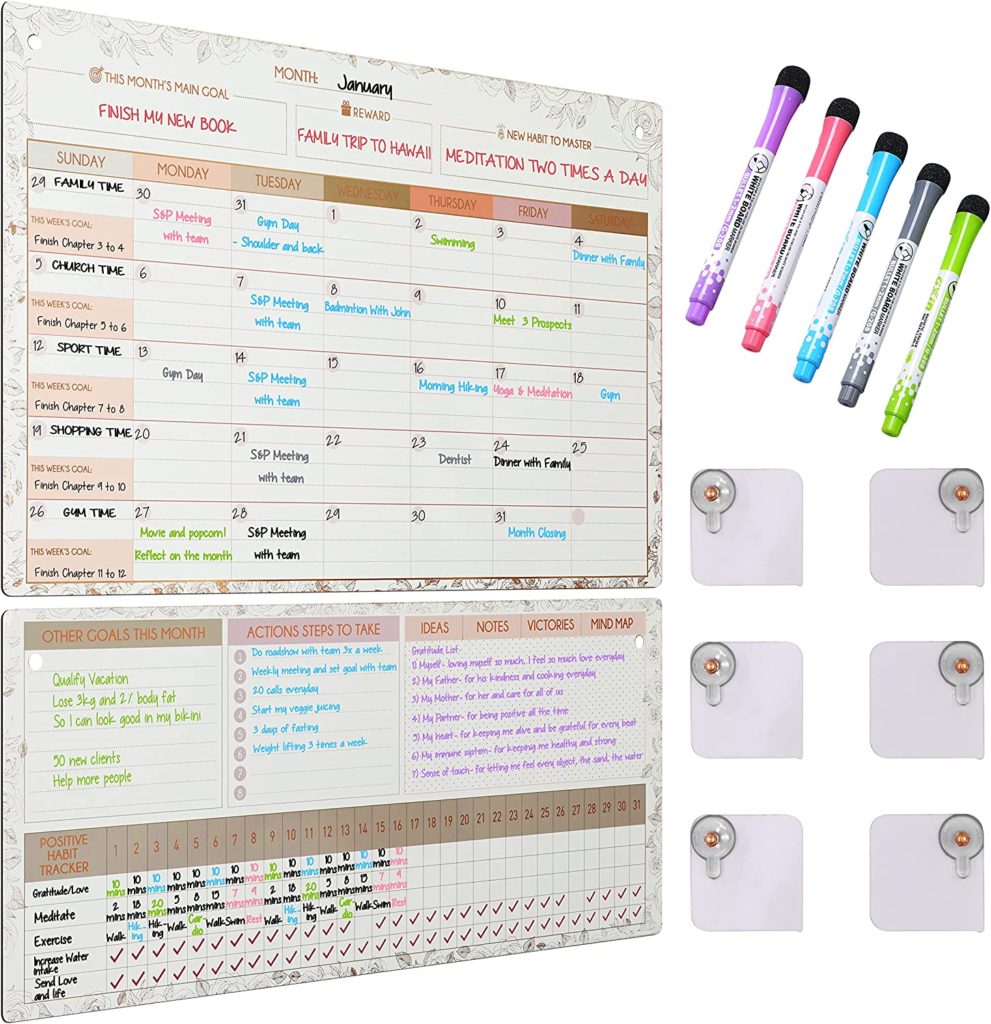Here are seven alternative ideas for family organizing that can help streamline routines, enhance communication, and foster a more organized and balanced family life.
Check out the following seven tools for family organizing available on Amazon:
- Command Center
- Meal Planner
- Chore Chart
- Family Calendar
- Tech-Free Alternatives for Family Time
- Checklists
- Activity Calendar
Digital Family Command Center: Create a centralized digital hub using tools like Google Drive, Microsoft OneDrive, or a shared cloud storage platform. This can serve as a digital command center for storing and accessing important documents, calendars, to-do lists, and other Essential information the entire family can access from their devices. A digital command center supplies a centralized location for storing and accessing important family information. You can create folders or categories for school schedules, medical records, financial information, and household maintenance details. Share the access with all family members to ensure everyone can contribute and access the necessary information.

Collaborative Meal Planning: Involve the entire family in meal planning by appointing specific days for each family member to contribute meal ideas. Use a shared document or a dedicated meal-planning app where everyone can add their favorite recipes or meal suggestions. This approach promotes inclusiveness and ensures that everyone’s preferences are considered. Involving the whole family in meal planning promotes engagement and variety. Each family member can have a designated day to suggest meal ideas, which can be added to a shared document or meal planning app. This approach ensures that everyone’s preferences and dietary needs are considered and reduces the burden on one person for meal planning.

Chore Rotation System: Implement a chore rotation system where family members take turns with different household tasks. This ensures a fair distribution of responsibilities and encourages a sense of ownership and contribution from each family member. Consider using a chore management app or a physical chore chart to track and rotate tasks. A chore rotation system ensures that everyone in the family contributes to household tasks. Create a list of chores and assign them on a rotating basis. This approach prevents the feeling of one person always being responsible for specific tasks and encourages a sense of shared responsibility for maintaining a clean and organized home.
Family Meeting Time: Set aside regular family meetings to discuss and plan essential family matters. This can be a weekly or monthly gathering where everyone can share updates, discuss upcoming events, address concerns, and make decisions together. It promotes open communication and provides a platform for collaborative decision-making. Regular family meetings allow one to discuss important matters and make decisions as a family unit. Set a specific meeting time and day and create an agenda to ensure productive discussions. Topics include upcoming events, schedule coordination, family goals, and addressing concerns or issues.

Technology-Free Zones: Appoint specific areas or times in the house as technology-free zones or hours. This encourages quality family time, improves face-to-face interaction, and reduces distractions from electronic devices. For example, you can set up a rule of having device-free meals or allocate specific rooms where technology is not allowed. Technology-free zones or hours create designated spaces or times where family members can disconnect from electronic devices and focus on quality time together. For example, the dining table can be a technology-free zone during mealtimes, or certain hours of the day can be designated screen-free for everyone to engage in activities like reading, playing games, or having conversations.

Visual Schedules and Checklists: Create visible schedules and checklists using whiteboards, bulletin boards, or digital apps that clearly outline daily routines, tasks, and expectations. Visual cues can help young children or individuals who benefit from visual aids. Include morning and bedtime routines and other recurring activities to supply structure and promote independence. Visible schedules and checklists are practical tools, especially for younger children or individuals who benefit from visual cues. Create a visual representation of daily routines, tasks, and expectations using whiteboards, bulletin boards, or digital apps. Include morning and bedtime routines, school schedules, extracurricular activities, and other recurring tasks to provide structure and ensure everyone knows what to expect.

Family Activity Calendar: Keep a shared family activity calendar with appointments, events, leisure activities, and quality time together. This helps the family members stay informed about each other’s commitments and allows for better coordination of schedules. Use color coding or symbols to differentiate between personal, work, and family-related activities. A shared family activity calendar helps everyone stay informed about each other’s commitments and allows for better coordination of schedules. Use a physical calendar in a central location or a digital calendar that all family members can access. Color coding or symbols can differentiate between different types of activities, making it easier to see how everyone’s schedules align.

Every family is unique, so feel free to adapt and modify these ideas to suit your family’s specific needs and dynamics. The goal is to find organizing strategies that promote effective communication, encourage participation, and create a shared responsibility within the family.
These ideas must be adapted to your family’s needs and preferences. Experiment with different approaches and solicit input from family members to find the organizing strategies that work best for your unique family dynamics. Evaluate and adjust these methods as your family’s needs and schedules evolve.

